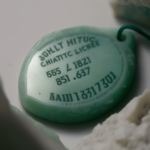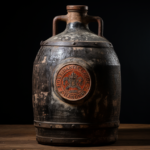Art Appraisals for Insurance Purposes: If you have art in your home that you would like to insure, you will need to get an art appraisal for insurance purposes. This is a requirement of most insurance companies, as they need to know the value of your art in order to determine how much coverage to offer. In this blog post, we’ll talk about what an art appraisal needs to have in order for it to be valid for insurance purposes. We will also talk about how to go about getting an art appraisal online.
Art appraisals for insurance purposes: requirements
When it comes to art appraisals for insurance purposes, there are certain characteristics that must be met in order for the art appraisals for insurance purposes to be considered valid. First, the art appraiser must be a qualified and experienced art professional. They should also be impartial, meaning they cannot have any financial interest in the art being appraised. Additionally, the art appraiser must have detailed knowledge of the art market and the particular type of art being appraised. This is essential in order to provide an accurate appraisal. An appraiser who is not objective may be influenced by personal feelings or preferences, which could lead to an inaccurate art appraisals for insurance purposes.
There is no one specific set of requirements that every art appraiser must meet in order to be qualified to appraise art. However, there are some general guidelines that most appraisers will follow. Typically, an appraiser should have a deep understanding and knowledge of the art world, specifically as it relates to the type of artwork being appraised. The appraiser should also have experience working with art insurance companies and be familiar with the process of appraising art for insurance purposes.
Art appraisals for insurance purposes: How to get one?
If you own artworks, you may need to get them appraised for insurance purposes. Here’s how to go about it.
First, contact a professional art appraiser. You can find a list of qualified appraisers through the Appraisers Association of America or the International Society of Appraisers. Be sure to interview several appraisers to find one who is a good fit for you and your collection.
When you meet with the appraiser, be prepared to provide as much information about your artwork as possible. This includes the artist’s name, the title of the piece, when and where it was acquired, and any other relevant details. The appraiser will also need to see the artwork in person to assess its condition.
Once the appraiser has all the necessary information, they will provide you with a written report that includes an estimated value for the artwork, the former Art appraisals for insurance purposes. This value can be used for insurance purposes. Keep in mind that art values can fluctuate over time, so you may need to get your artwork reappraised on a regular basis.
Art appraisals for insurance purposes: How do you appraise artwork for insurance purposes?
When it comes to appraising artwork for insurance purposes, there are a few things you need to take into account. The value of the piece, the artist’s market value and the condition of the piece are all important factors that will affect how much your insurance company is willing to pay out in the event of damage or theft.
It’s important to have a professional art appraisals for insurance purposes done in order to get an accurate value for your piece. Many factors, such as the materials used, the age of the piece and the artist’s reputation can all affect the value. If you’re not sure where to start, your insurance company may have a list of approved appraisers that they accept.
Art appraisals for insurance purposes: Get an Online Appraisal
If you’re looking to insure your art collection, you’ll need to get an accurate appraisal. The best way to do this is to hire an online art appraiser.
There are a few things you should keep in mind when choosing an appraiser. First, make sure the appraiser is accredited by a reputable organization. Second, check to see if the appraiser has experience appraising the type of art you have. Finally, be sure to get an estimate of the art appraisals for insurance purposes fee before hiring an appraiser.
Once you’ve found a qualified appraiser, you’ll need to provide them with some information about your artwork. Be sure to include photos, dimensions, and any other relevant information.
Art appraisals for insurance purposes: How much should an art appraisal cost?
An art appraisal cost can vary depending on the appraiser and the type of artwork being appraised. However, as a general guideline, an art appraisal should cost between $200 and $400. If you are hiring a certified professional appraiser, you may expect to pay closer to the higher end of this range. When selecting an appraiser, be sure to ask about their experience and qualifications, as well as what type of art they are qualified to appraise. You should also inquire about the appraiser’s fee structure and whether they offer discounts for multiple items. Finally, be sure to get a written estimate of the art appraisals for insurance purposes fee before having any work done.
Art appraisals for insurance purposes: Art Appraising and Valuation For Legal or Insurance Purposes
There are many reasons why you might need to get an art appraiser or value your artwork for legal or insurance purposes. Maybe you’re buying or selling a piece of art, getting divorced, settling an estate, or insuring your collection. Whatever the reason, it’s important to choose a qualified professional who can provide an art appraisals for insurance purposes.
Appraisers must also have extensive knowledge about the art market and be up-to-date on current trends. They should be familiar with the work of the artist you’re inquiring about and be able to provide comparable sales data for similar pieces.
The art appraisals for insurance purposes process usually begins with a visual inspection of the artwork. The appraiser will take note of the medium, dimensions, condition, and any signatures or markings. They will also research the piece’s provenance, or history of ownership.
After the initial inspection, the appraiser will research the artist and comparable sales data to come up with a value for the artwork. This value can be used for insurance purposes, estate planning, or tax purposes.
When getting an art appraisals for insurance purposes, it’s important to make sure the appraiser is familiar with your insurance company’s requirements. Some companies require a replacement value, while others will insure the artwork for its market value.
If you’re going through a divorce or settling an estate, you’ll need to get a fair market value art appraisals for insurance purposes to divide the assets between the parties involved. An appraiser can help you determine the value of art, jewelry, furniture, and other assets.
It’s important to choose a qualified appraiser who is experienced and knowledgeable about the art market. They should be familiar with the artist’s work and be able to provide comparable sales data.
What is the difference between replacement and restoration coverage?
When insuring your art collection, it is important to understand the difference between replacement and restoration coverage. Replacement coverage pays to have your damaged or destroyed artwork replaced with a new piece that is of similar value. Restoration coverage pays to have your artwork restored to its original condition.
There are several factors to consider when deciding which type of coverage is best for you. Replacement coverage is typically more expensive than restoration coverage, but it may be worth the extra cost if your collection includes rare or one-of-a-kind pieces. If your artwork is of sentimental value, you may prefer restoration coverage so that you can keep the original piece.
What is the difference between mark to market valuation and fair market value?
When it comes to appraising art for insurance purposes, there are two main methods of valuation: mark to market and fair market value. Here’s a look at the key differences between these two methods:
Mark to market valuation looks at the current market value of an asset, assuming that it will be sold immediately. This method is often used for securities and other financial assets.
Fair market value, on the other hand, takes into account the unique circumstances of the sale, such as the seller’s motivation and the buyer’s willingness to pay. This method is typically used for physical assets like art and real estate.
Both methods have their advantages and disadvantages.
What is the difference between mark to market valuation and insurance value?
When it comes to appraising art for insurance purposes, there are two main methods of valuation: mark to market and insurance value. Mark to market valuation focuses on the current market value of the art, while insurance value takes into account the replacement cost of the piece. Here’s a closer look at the difference between these two methods:
Mark to market valuation:
With mark to market valuation, the appraiser looks at the current market value of the art. This is determined by looking at recent sales of similar pieces, as well as the current condition of the piece. The goal is to come up with a value that reflects what the art would sell for on the open market today.
Insurance value:
With insurance value, the appraiser looks at the replacement cost of the piece. This takes into account the cost of materials and labor to recreate the piece, as well as any sentimental value. The goal is to come up with a value that would cover the cost of replacing the art if it were lost or damaged.
Which method is used will depend on the purpose of the appraisal. For example, if you’re looking to insure your art collection, the insurance company will typically require an insurance value art appraisals for insurance purposes. This is because they need to know that they would be able to replace the pieces if they were lost or damaged.
If you’re looking to sell your art, you’ll likely need a mark to market art appraisals for insurance purposes . This is because buyers will want to know what the piece is currently worth on the open market.
It’s important to note that both methods have their own strengths and weaknesses. Insurance value art appraisals for insurance purposes can be more expensive and time-consuming, as they require a more detailed analysis. Mark to market appraisals can be less accurate, as they are based on current market conditions which can change over time.
Ultimately, the best method for you will depend on your specific needs and goals.
What is the insurance value for a piece of art?
The insurance value for a piece of art is the appraised value of the artwork, plus the cost of any necessary repairs. The appraised value is determined by an art appraiser, and the cost of repairs is typically estimated by a professional conservator.
How can appraise for insurance purposes an unsigned piece of art, where the author is unknown?
It can be difficult to appraise an unsigned piece of art for insurance purposes, as the value may be difficult to determine without knowing the artist. If the piece is valuable, it is recommended that you consult with a professional appraiser or art dealer to get an accurate estimate of its worth. You may also want to check with your insurance company to see if they have any guidelines for insuring unsigned artwork.
If I want to appraise something for insurance purposes, is it better in person or online appraisal?
You might be surprised to learn that in many cases, online appraisals are just as accurate as in-person appraisals. In fact, some experts believe that online appraisals can be even more accurate, since the appraiser has access to a wider range of data and resources.
Of course, there are some situations where an in-person art appraisals for insurance purposes is necessary, such as when appraising a rare or valuable item. But in general, an online appraisal can be just as good as an in-person one.
How can I get my painting appraised for free?
There are a few ways that you can get your painting appraised for free. One way is to contact your local art museum or art gallery and ask if they offer appraisal services. Another way is to search online for “free painting appraisal” or “painting appraisal services.” You may also be able to find free painting art appraisals for insurance purposes through online auction sites such as eBay. Finally, if you know of a local art dealer or collector, you could ask them to appraise your painting for you.
Getting your painting appraised for free is possible if you are willing to do a little research and legwork. By contacting your local art museum or gallery, searching online, or asking a local art dealer or collector, you should be able to get the appraised value of your painting without having to pay for the service.
Is there any legal requirements to insure artworks?
There is no legal requirement to insure artworks, but it is always advisable to do so in order to protect your investment. Many insurance companies offer specialized art insurance policies that can provide coverage for damage, theft, or other Losses. Be sure to shop around and compare rates before purchasing a policy.
Art appraisals for insurance purposes: Sum of the parts valuation or mark to market valuation, why do you use them?
There are two primary methods for valuing a company: sum of the parts valuation and mark to market valuation. Sum of the parts valuation is typically used for conglomerates or companies with multiple business units, while mark to market valuation is more commonly used for single-business firms.
So, which method is better? It really depends on the situation. Each has its own advantages and disadvantages.
Sum of the parts valuation is often seen as being more accurate because it values each business unit separately. This can be especially helpful in cases where one business unit is doing very well while another is struggling. By valuing each business unit separately, you can get a more accurate picture of the company’s overall value.
However, sum of the parts valuation can also be very time-consuming and complicated. It can be difficult to accurately value each business unit, especially if there are a lot of them. In addition, this method does not take into account the potential synergies between different business units.
Mark to market valuation, on the other hand, is much simpler and can be done relatively quickly. It also takes into account potential synergies between different business units. However, it can sometimes lead to an overestimation of a company’s value if the market conditions are favorable at the time of valuation.
So, which method should you use? Ultimately, it depends on the situation. If you have the time and resources to do a sum of the parts valuation, it can be more accurate. But if you’re looking for a quick and easy way to value a company, mark to market valuation is usually the better option.
The best art appraisals for insurance purposes for insurance purposes
When you need to insure your artwork for its full value, you need an art appraisals for insurance purposes. Art insurance companies typically require an appraisal that meets their standards in order to insure your artwork.












